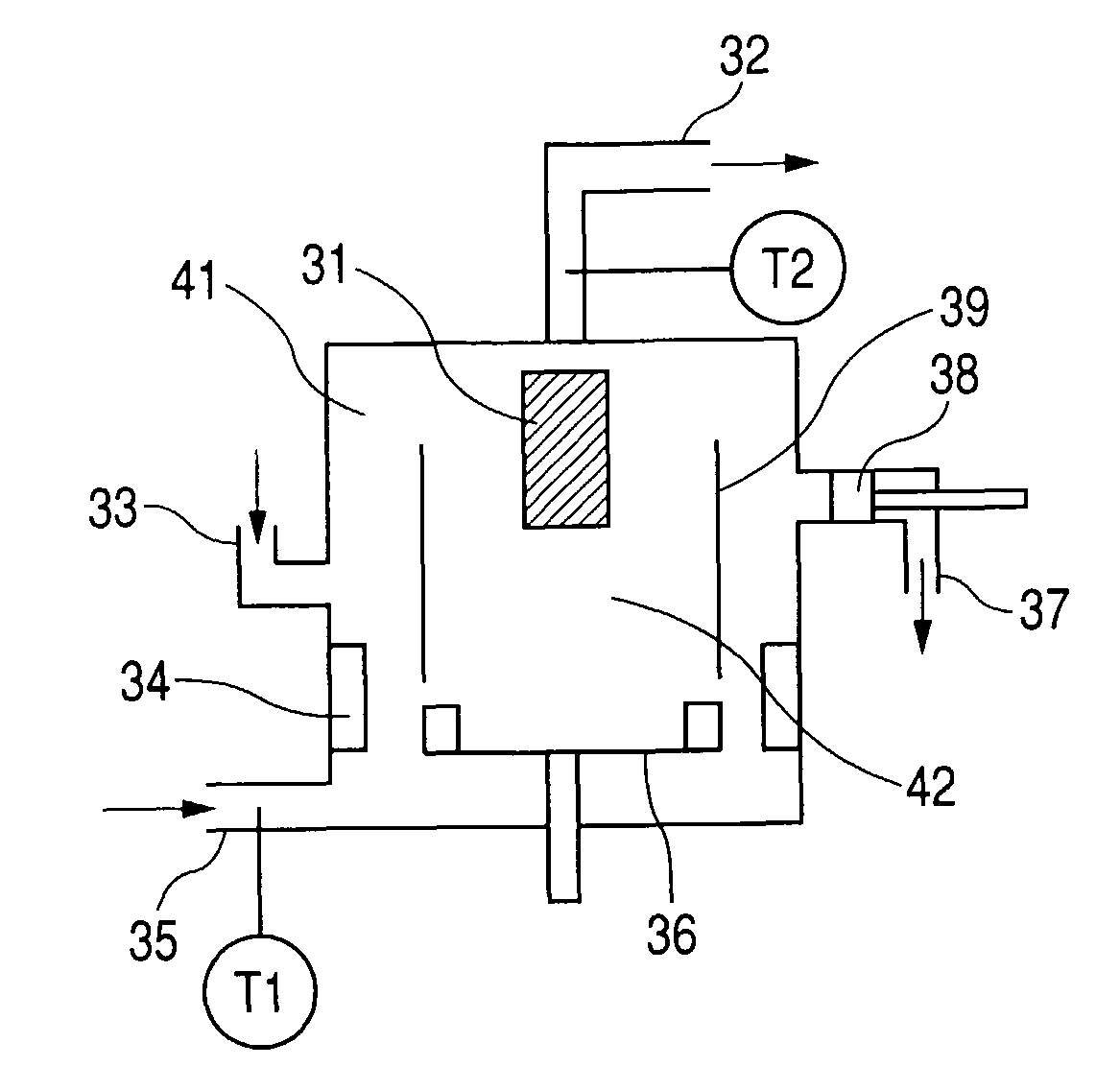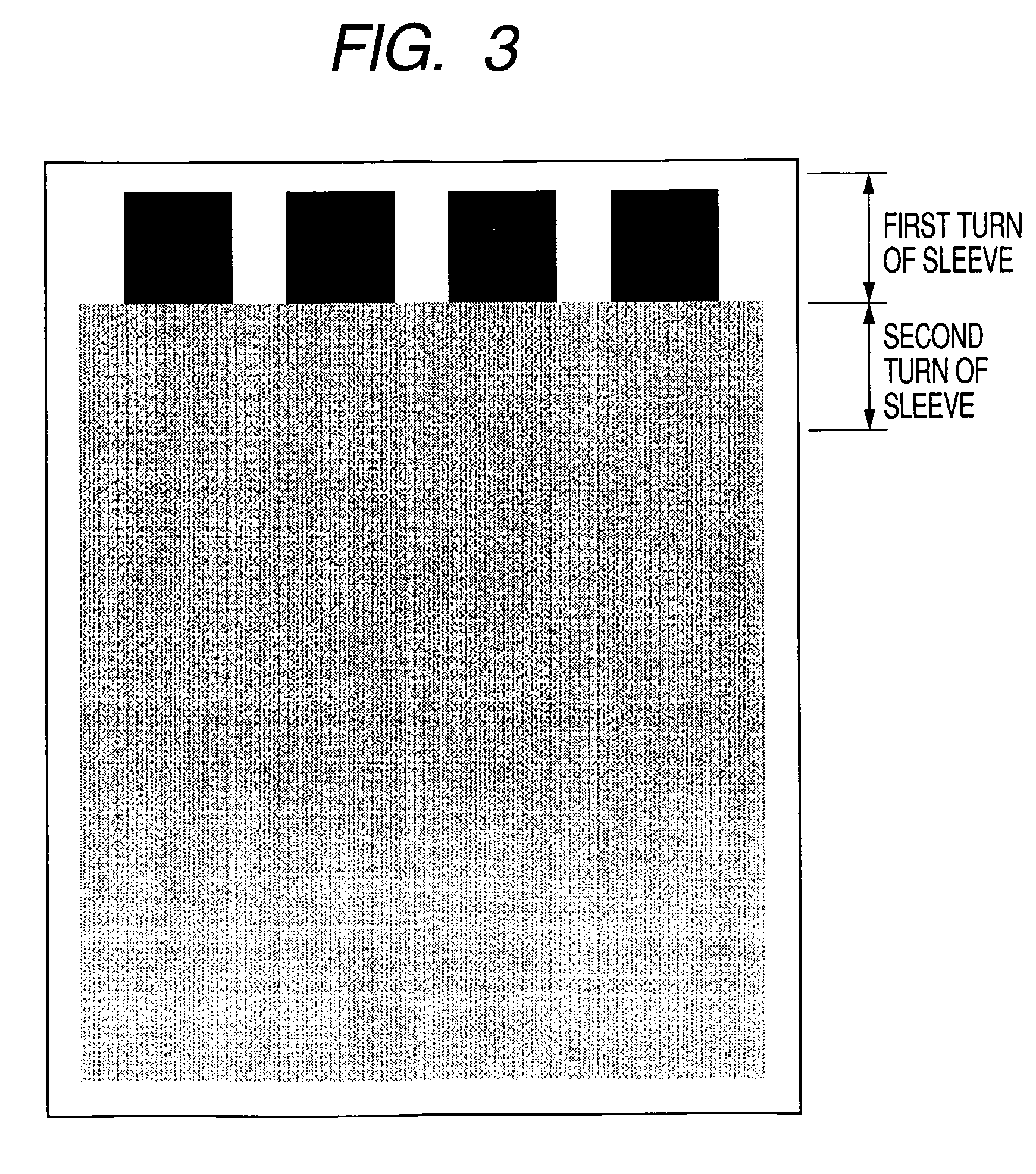Magnetic toner
a toner and magnetic technology, applied in the field of toner, can solve the problems of deteriorating the crushing adversely affecting the charging property of the toner, reducing the image density or fog, etc., and achieves excellent dot reproducibility, excellent fixing property and high image density regardless of the use environment.
- Summary
- Abstract
- Description
- Claims
- Application Information
AI Technical Summary
Benefits of technology
Problems solved by technology
Method used
Image
Examples
example 1
[0393]binder resin 1: 100 parts by weight
[0394]magnetic iron oxide 1: 100 parts by weight
[0395]monoazo iron compound (1) (couter ions being a mixture of NH4+ and Na+ with a mixing ratio NH4+ / Na+−7 / 3):2 parts by weight
[0396]salicylic acid Al compound (1):1 part by weight
[0397]wax A: 6 parts by weight
[0398]The above-mentioned components were pre-mixed in a Henshell mixer, then melt kneaded by means of a 2-shaft extruder heated to 130° C., and the kneaded substance was cooled and roughly crushed by means of a hammer mill to produce a roughly crushed product. The resulting roughly crushed product was finely crushed by means of a mechanical crusher Turbo Mill (manufactured by Turbo Kogyo Co., rotor and stator surfaces plated with a chromium alloy containing chromium carbide (plating thickness 150 μm, surface hardness HV 1050)) at an air inlet temperature of −15° C., at an air outlet temperature of 49° C. and at a coolant temperature of −5° C. for cooling the crushing rotor and the liner,...
example 2
[0402]Magnetic toner 2 was prepared in the same manner as in Example 1 except that the binder resin 1 was changed to binder resin 2. Properties of the magnetic toner 2 are shown in Table 2.
example 3
[0403]Magnetic toner 3 was prepared in the same manner as in Example 1 except that the binder resin 1 was changed to binder resin 3, the wax A was changed to 4 parts by weight of Fischer-Tropsch wax (DSC peak top temperature=104° C., Mx / Mn=1.8), and 1.2 parts by weight of the hydrophobic silica fine particles was changed to 1.5 parts by weight. Properties of the magnetic toner 3 are shown in Table 2.
PUM
| Property | Measurement | Unit |
|---|---|---|
| residual magnetization σr | aaaaa | aaaaa |
| diameter | aaaaa | aaaaa |
| surface roughness | aaaaa | aaaaa |
Abstract
Description
Claims
Application Information
 Login to View More
Login to View More - R&D
- Intellectual Property
- Life Sciences
- Materials
- Tech Scout
- Unparalleled Data Quality
- Higher Quality Content
- 60% Fewer Hallucinations
Browse by: Latest US Patents, China's latest patents, Technical Efficacy Thesaurus, Application Domain, Technology Topic, Popular Technical Reports.
© 2025 PatSnap. All rights reserved.Legal|Privacy policy|Modern Slavery Act Transparency Statement|Sitemap|About US| Contact US: help@patsnap.com



